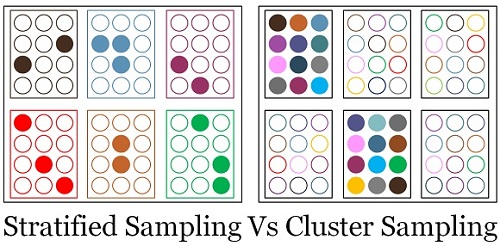Hypothesis testing
Bias
Sampling Methods
Stratified Sampling
Stratified sampling is a sampling procedure where random samples are drawn from mutually exclusive homogeneous groups within a population. The homogeneous groups are known as strata. A sample is taken from each group, and these samples are combined to form a single sample from the population as a whole.
With this sampling method, homogeneity occurs within groups, and heterogeneity occurs between groups.
This sampling technique might be used to help ensure fairness across all groups, especially those that may be left out from a direct population level sampling procedure. Whether or not this sampling method should be used of course depends heavily on the context.
Cluster Sampling
Cluster sampling is a sampling procedure where random samples are drawn collectively from heterogeneous, naturally occurring clusters within a population. In this case the clusters are the component subject to random sampling, and the entities from within selected groups make up the final population sample.
With this sampling method, homogeneity occurs between groups, and heterogeneity occurs within groups.
This sampling method might be used when it makes sense to sample naturally occurring groups from within a population, like geographical locations. In this case, humans would be the entities, and each location would likely make up a heterogeneous group of individuals.
